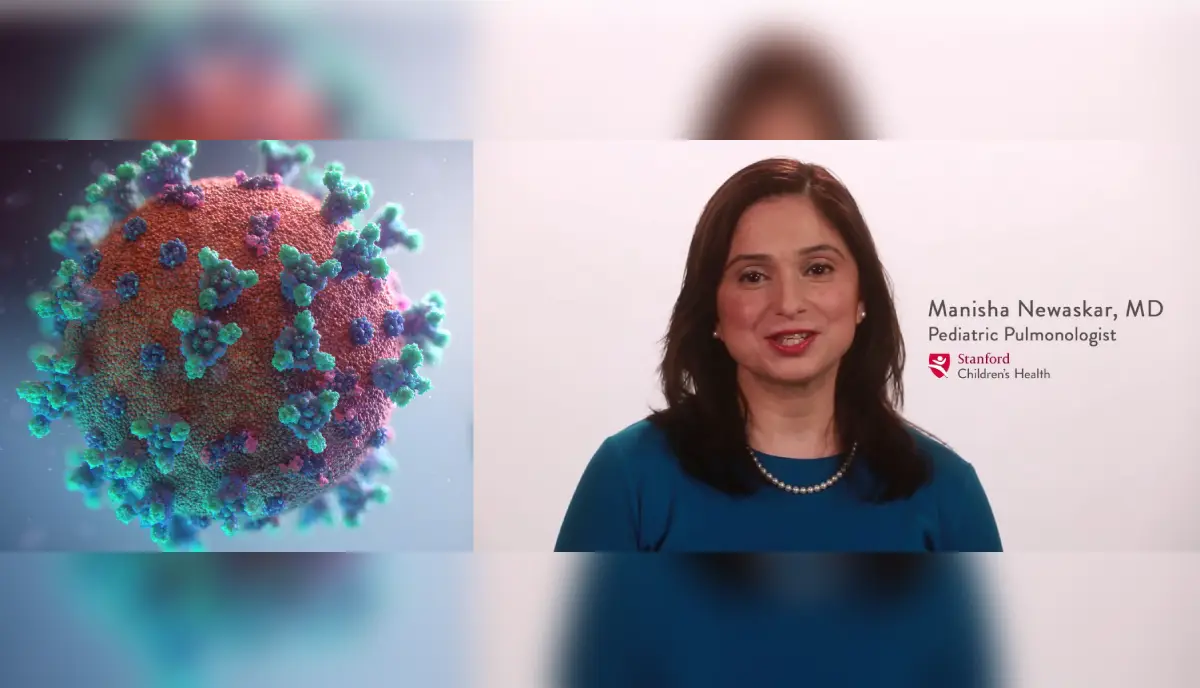
Weathering A Nationwide Tripledemic – COVID-19, Flu, RSV
Photo: Ethnic Media Services
By Selen Ozturk, Ethnic Media Services
A surging “tripledemic” of COVID-19, flu, and RSV threatens to overburden an already burdened U.S. healthcare system.
At a January 5 briefing co-hosted by Ethnic Media Services and Blue Shield of California Foundation, medical experts discussed tripledemic predictions; the newest JN.1 strain of COVID; symptoms, prevention, and treatment for all three infections; and why vaccines and masks remain crucial.
A tripledemic overview
There are over 100 different viruses that cause upper respiratory infections — which include COVID-19, influenza, and respiratory syncytial virus (RSV), said Dr. Jose Perez, Chief Medical Officer at South Central Family Health Center.
Common to all three are not only these upper respiratory symptoms evident in the nose, the throat, and eyes — alongside overall “constitutional symptoms such as fever and muscle aches” — but also lower respiratory symptoms, including “infections of the bronchial tree and lungs, which can lead to bronchitis and pneumonia.”
Transmission, too, is similar: “All three viruses invade the human body by meeting body fluids from an infected, coughing, or sneezing individual who leaves mucus particles in the air and on surfaces. All occur more frequently during winter, when people are more indoors due to inclement weather and holiday celebrations,” Perez explained.
“It is very difficult to tell which virus is affecting the patient based on symptoms alone,” he continued, as many overlap: “cough, sore throat, runny nose, fever, tiredness, muscle aches, shortness of breath … more often with COVID there’s the loss of sense of taste or smell, while more often with RSV there’s wheezing and an increase in respiratory rate, especially in children.”
All three viruses are now on the rise nationwide. The CDC reported over 29,000 Covid hospitalizations in the week ending December 23, while the new JN.1 subvariant accounts for nearly half of new COVID infections. Estimates for this year’s flu season, furthermore, are as high as 19 million cases with 19,000 deaths, according to the CDC.
With all this in mind, said Perez, “Take care to wash your hands, cover your nose and mouth with a mask in high-density spaces, keep a six-foot distance from anyone coughing or sneezing, stay home if you feel sick, and get vaccinated.”
Although COVID vaccines are no longer free under the federal government, many private and federal healthcare plans — including Medi-Cal — cover them alongside flu and RSV shots.
The new JN.1 strain of COVID
“Until now we’ve vaccinated against three different strains of COVID, and we have driven all of those to extinction through a combination of vaccination and herd immunity,” said Dr. Benjamin Neuman, Chief Virologist of the Global Health Research Complex at Texas A&M University. JN. 1, however, presents “the first time that one of those older strains” — B.A.2.86., an Omicron variant — “has mutated, grown and returned to cause additional problems.”
Now that the most prevalent COVID strain has forked into different variants, with JN.1 comprising half of all cases, “one vaccine does not protect against both at the moment very well, so JN.1 is able to get in despite pre-existing immunity, especially given that the neutralizing antibodies that actually shield you stop the virus from getting in are low to gone after a year,” he explained.
While it’s not all doom and gloom — JN.1 is not particularly faster-growing than other viruses, and “COVID has slipped to number seven overall on the CDC’s most-updated list of causes of death nationwide” — long COVID may worsen some of the higher categories in the form of “heart disease and cardiovascular problems, long-term breathing complications, and brain fog or brain shrinkage,” said Neuman.
“This is not something that is completely settled, and may not be something that we can ever know for certain,” he added, “but we do know that JN.1 comes from very much the same virus as all the ones that came before; it’s just better at evading immune defenses … It’s been a long four years, and we can still do our best to help ourselves through vaccination and prevention.”
RSV in infants, older adults
Prevention is also the best course for RSV, a common illness without a cure, said Dr. Manisha Namaskar, pediatric pulmonologist at Stanford Children’s Health. “Although nearly all children are infected with RSV before their second birthday, it typically presents like a regular cold in older children and young adults … but the younger or older you are, the greater the risk to your immune status.”
In fact, RSV is a leading cause of bronchitis among children under age five, annually resulting in 2.1 million outpatient visits; 58,000 to 80,000 hospital admissions; and 100 to 300 deaths.
Among these children, Newaskar continued, “we see the highest morbidity in those below six months and premature infants, where it presents as severe trouble breathing, low oxygen levels, wheezing, pneumonia.”
Also, more at-risk of these respiratory tract infections are older adults with underlying conditions like diabetes, asthma, and chronic obstructive pulmonary disease (COPD). The good news for adults aged 60 and over is that two kinds of single-dose RSV vaccines have been FDA-approved as of May 2023.
Although antiviral medications and in-hospital IV, oxygen, and ventilation treatment can be used for severe cases of RSV, there are no vaccines for children.
However, injectable antibody Synagis has been given to high-risk infants for over 45 years, while in July 2023 the FDA approved Nersevimab, the first drug to prevent RSV lower respiratory infections in babies and toddlers. As treatments develop, Newaskar said, “the best tripledemic treatment is prevention, which includes getting vaccines where they’re available.”
With RSV as with COVID, “it won’t really matter which variant of the virus you have when you’re already lying in a hospital bed,” added Neuman. As RSV, flu, and COVID are on the rise, “what matters is prevention … The lessons we learned during the pandemic are still critical to keeping ourselves safe in this tripledemic.”




